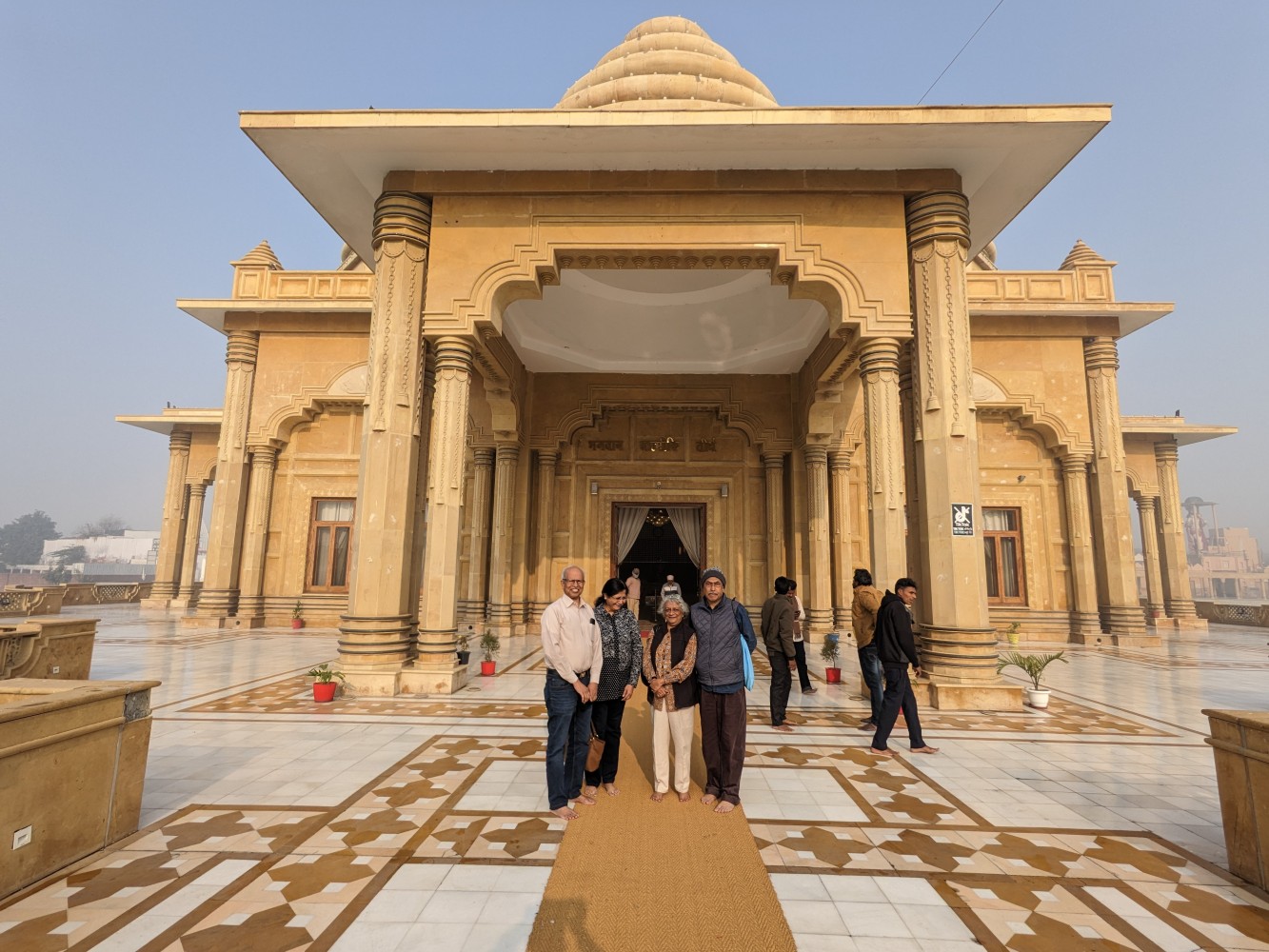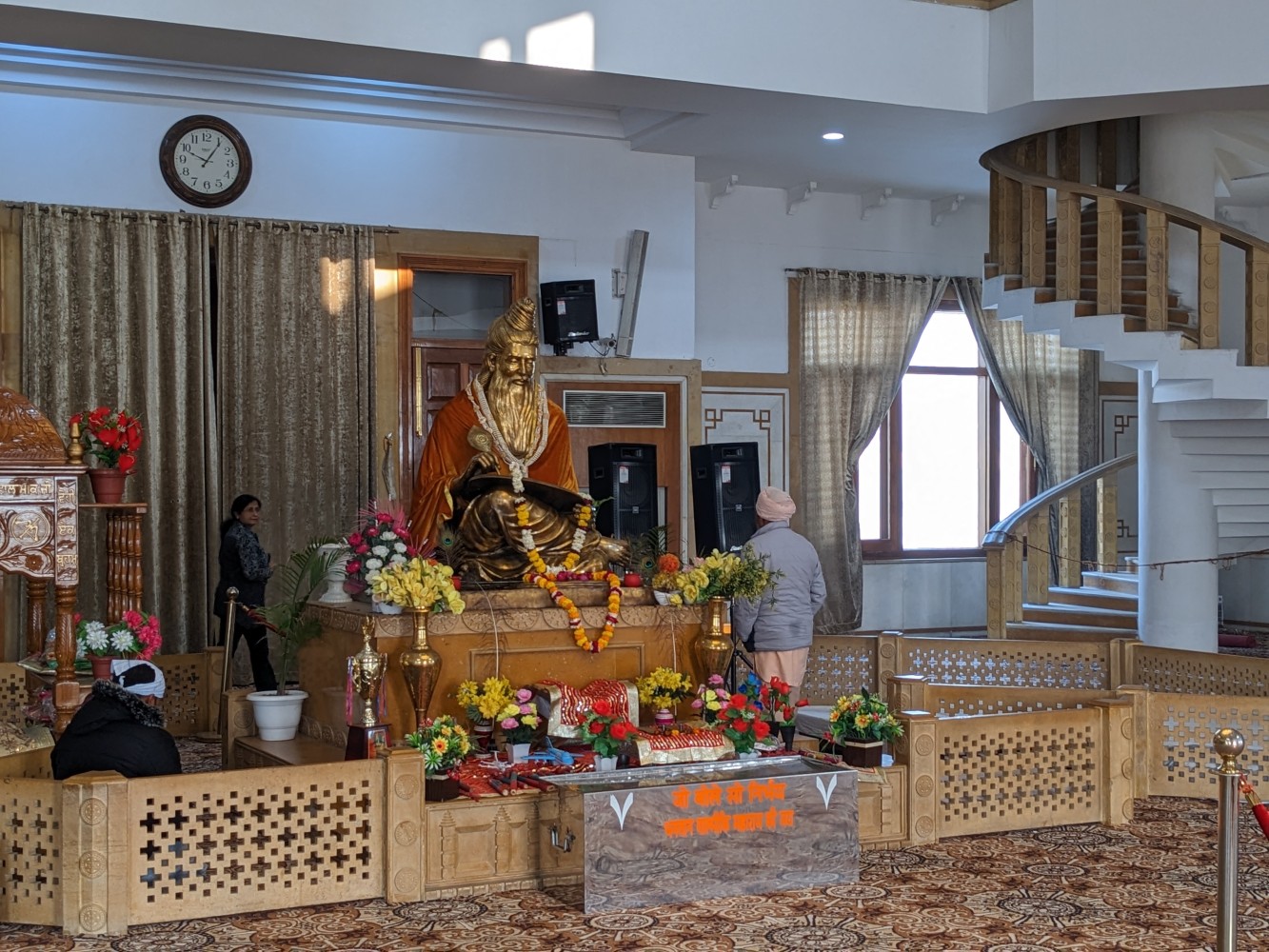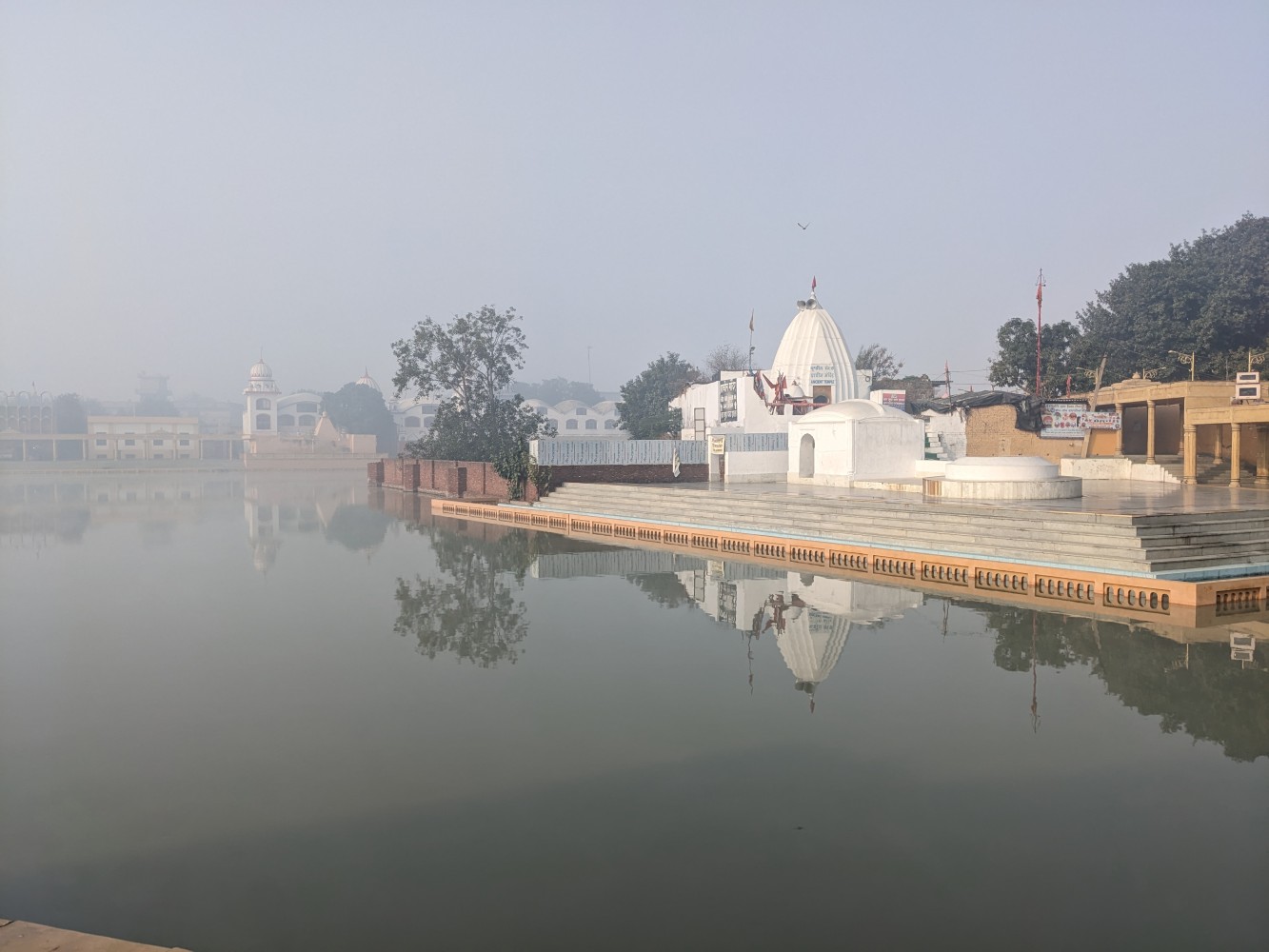Amritsar derives its name from Amrit Sarovar (lake of nectar) built by Guru Ram Das Ji, the fourth Sikh Guru in 1577. He believed the water of Amrit Sarovar had healing power. Varsha, Mahendra, Alka and I decided to visit Amritsar, a historic city that also got intimately linked to the end of the British rule over India. The city is just 50 km away from Lahore. They were thriving twin cities before partition in undivided India.

On top of the list of places to visit was The Golden Temple (christened as Harmandir Sahib – Abode of God), which is one of the holiest sites of Sikh religion. The Golden Temple is open to everyone – regardless of religion, caste, color, or sex. The Harmandir Sahib was built in 1604, in the middle of Amrit Sarovar by Guru Arjan Das Ji, the fifth Sikh Guru, who was also the youngest son of Guru Ram Das Ji. After being ransacked and rebuilt several times, the temple was re-built in marble and copper in 1809 by the founder of the Sikh Empire, Maharaja Ranjit Singh. It acquired the name ‘The Golden Temple’ after the sanctum of the temple was overlaid with gold leaf in 1830 during the reign of Ranjit Singh.
The next on the list was Jallianwalla Bagh. The place is named after the owner who donated the land to build a bagh (garden). It is now a memorial which commemorates the massacre of hundreds on unarmed civilians by General Dyer in 1919. In addition, we planned to visit the Partition Museum established in 2017, seven decades after partition; the Gobindgarh Fort, built over five centuries ago that was conquered by Ranjit Singh in 1825 and renamed after the tenth Sikh guru, Gobind Singh Ji; and the Attari-Wagah border with Pakistan to watch the lowering of flag ceremony by the BSF. As we were to be in Amritsar for just three nights, we reckoned that it would not be possible to add other places to our already busy plan. We had chosen these from the top ten places to visit in Amritsar as listed on different websites.
We reached Amritsar on a cold mid-December evening. The cold contrasted sharply with the warmth of interaction at the airport, with the cab driver, and at the hotel. On the way to the hotel, Maninder Singh, our cab driver who also owned the cab, offered to drive us around during our stay. He also quoted the rate he would charge for a full day’s booking. After checking the hiring charges for vehicles from the concierge of the hotel, we called up Maninder Singh and booked his cab for the next day, starting at 9 AM. We retired early to get ready for a tiring tomorrow after a sumptuous dinner of traditional Amritsari fare.
As we went past the reception counter for breakfast the next morning, we were informed that a car had reported for us. Breakfast over, we went out in search of the middle-aged Maninder Singh. Instead, we were greeted by a young man wearing a flowing blue robe, a blue turban, and with a sword and a kirpan (a knife with a curved blade) hanging from his waist. He informed us in Hindi that he had been sent by his uncle who was busy with another assignment. The uncle never bothered to inform us as in his world view the change was too trivial to require clearance from us. We realized that the young man was a Nihang Sikh, and belonged to the Sikh warrior order that was started by the Guru Gobind Singh Ji. We could not but take note of the sword and the kirpan. With some apprehension, as we got into the car, I asked the young man his name. He said, “Maninder Singh”. Stating the obvious, I observed, “Oh! So, your uncle and you have the same name!” With a disarming smile, he said, “Yes”.
The young Maninder was quite knowledgeable about Punjab’s history and its contribution to the freedom struggle. Without our asking he accompanied us to the Jallianwalla Bagh. We noticed that his presence dissuaded the hawkers from bothering us. Maninder proved an excellent guide as he showed us around the Bagh. In 1919, there was no escape from the bullets as the only entrance to the Bagh was blocked by General Dyer’s 50 Gurkha and Baluchi riflemen. The men took position at the entrance with their rifles pointing at the unarmed crowd gathered in the Bagh. When ordered to fire, the shocked men fired the first round in the air, believing that the purpose was merely to intimidate the crowd. An infuriated Dyer ordered his men to lower their rifles before firing the next rounds making his intention to kill clear to his men. We walked among the bullet ridden walls and structures unable to comprehend the justification for the monstrous act of Dyer. The lovely roses and other seasonal flowers that bloomed in the garden and the patriotic song that played in the background were a perfect tribute to the memory of the hundreds who died in 1919.
On the way back to the hotel, Maninder said that we ought to visit the Bhagwan Valmiki Tirath Sthal (also known as Shri Ram Tirath Mandir) that was about 12 km from Amritsar. This had not shown up in top ten site seeing places in Amritsar in our google search. On being asked what was special about the place, he informed us that it was the birthplace of Luv and Kush, the twin sons of Sita. We were unaware of this. Maninder also told us that the horse used for the Ashvamedh Yagya by Lord Rama was captured by Luv and Kush near the place. A quick review of our itinerary showed that we may not be able to visit the place. We stuck to our plan the next day, and almost forgot about Bhagwan Valmiki Tirath Sthal.
As we checked out of the hotel on the third day at 9 AM and loaded our bags in the SUV to drive to Dharamshala, on an impulse I checked the location of the place on Google Maps. By chance was it on our way to Dharamshala? It was not. On the contrary, I found that Bhagwan Valmiki Tirath Sthal was located almost west of Amritsar while the route to Dharamshala was in the Northeast direction. A detour to the place would add another hour and a half to the estimated four and a half hours to reach Dharamshala from Amritsar. A quick discussion and all of us were on board about taking the detour. Our curiosity had been aroused. Amritsar is 1150 km away from Ayodhya. Why was Sita so far away from Ayodhya while giving birth to her sons?

It was a cold hazy morning. As we alighted from the vehicle, we saw the majestic, new Maharishi (Sage)Valmiki temple built in 2016. The temple is situated in the middle of a large, refurbished ancient pond that is considered sacred. A broad bridge over the pond leads to the large sanctum that has an eight feet tall statue (said to be made from gold) of Maharishi Valmiki, sitting cross-legged and writing the Ramayana. Valmiki is revered as the first poet who composed the epic Ramayana sometime between the 5th and the 1st century BCE. A large wooden box covered by an ornate cloth and placed in front of the statue is believed to contain the original copy of Ramayana. Two priests were seated by the side of the box going through some morning rituals. We were the only visitors to the temple. We asked the priests whether we could see the original copy of Ramayana. Their answer was in the negative.

Bhagwan Valmiki Tirath Sthal is a religious destination for both Hindus and Sikhs. Valmiki Jayanti is celebrated every year by thousands of devotees for several days starting on the full moon day in the month of Ashwin as per the Hindu calendar (September-October in the Gregorian calendar). It is a place of worship for Hindus because of its link with Ramayana. It is a place of worship for Sikhs as Guru Nanak Dev, the founder prophet of Sikhism belonged to the community that traces its descent to Kush, one of the twin sons of Sita and Rama.
The story of Sita’s exile and how she ended up in sage Valmiki’s ashram (hermitage) is interesting and instructive. After rescuing Sita from the clutches of demon king Ravana, Rama was crowned king of Ayodhya. After the euphoria of his return ebbed, Lord Rama received disturbing reports from his informers that people believed that Sita had been unfaithful to him in her thoughts when she was in captivity of Ravana. As a king, Rama felt compelled to heed to people’s perceptions. He therefore ordered his brother, Lakshmana, to leave Sita in the ashram of Maharishi Valmiki in the forest. A reluctant Lakshmana took an enthusiastic and unsuspecting Sita to meet sage Valmiki. On reaching the destination, with great distress, Lakshmana informed Sita about his brother’s decision that she should not return to Ayodhya. Sita was overcome with grief when she learned that she was being exiled based on false allegations. Learning about Sita’s situation, Maharishi Valmiki provided shelter to her in his ashram. Unknown to Rama, Sita was pregnant when she was thus exiled.

The folklore informs us that after accomplishing the mission of uniting her sons with their father, Sita disappeared from the temporal world by returning to her ‘mother’ Earth (Bhudevi). Despite being a victim of adverse circumstances, Sita was a woman who led a life with purpose and steely resolve. To use the modern jargon, Sita was an ‘empowered woman’. She knew her self-worth, she had the ability to make her choices, and she displayed the resolve to execute the choices she made. A visit to Bhagwan Valmiki Tirath Sthal is a must not only to learn about the lesser known events from the ancient epic Ramayana but also to appreciate the tribute to womanhood they convey.
